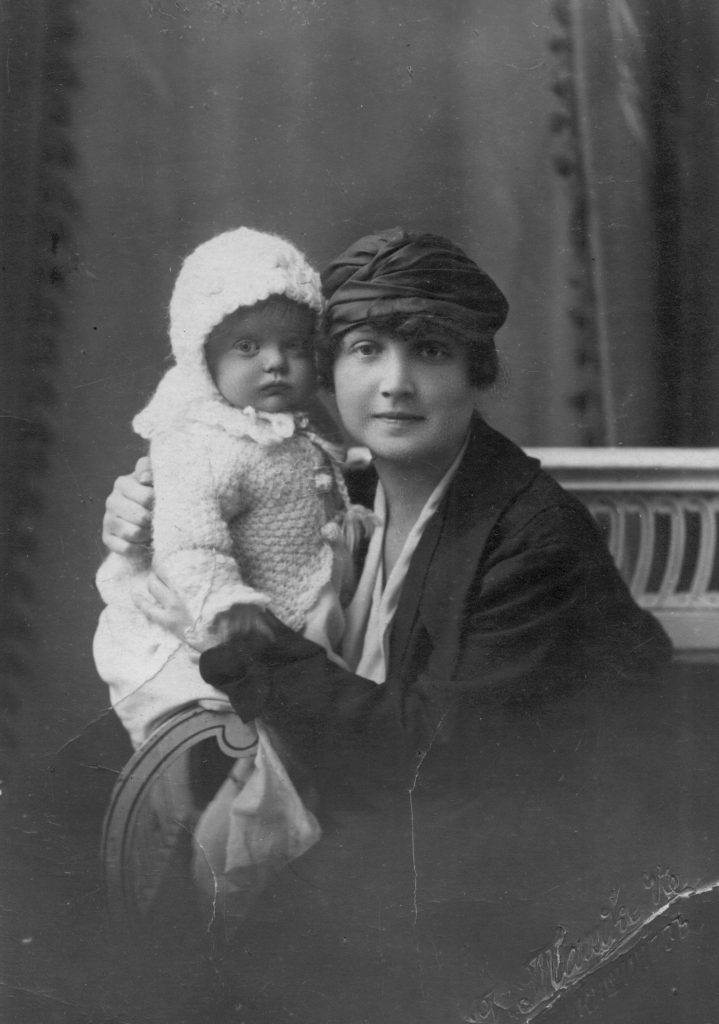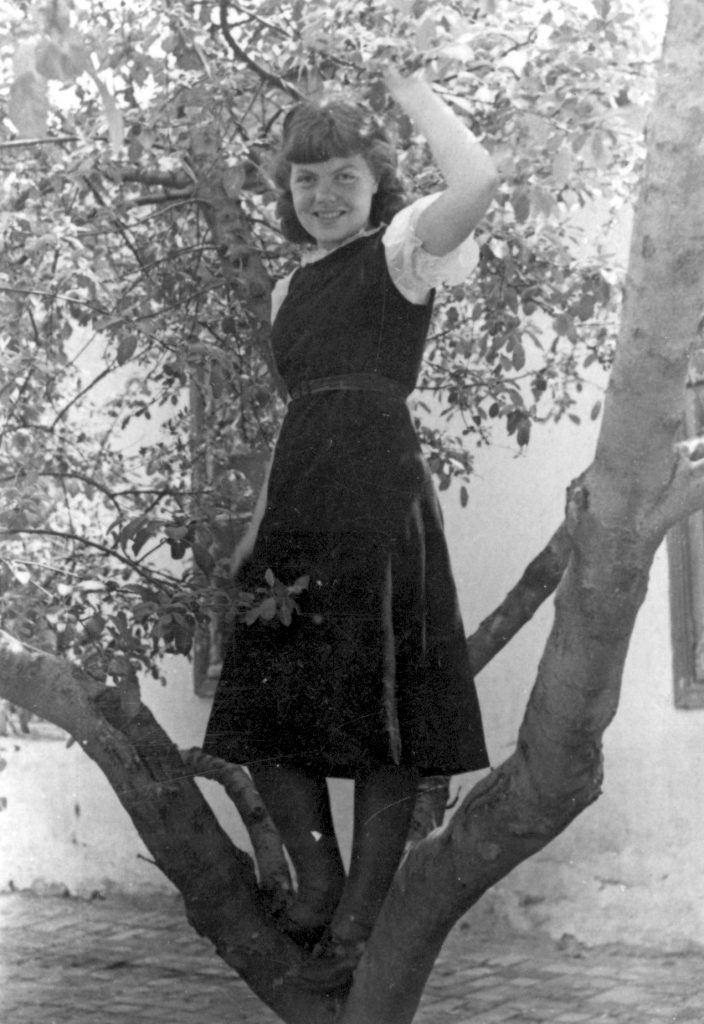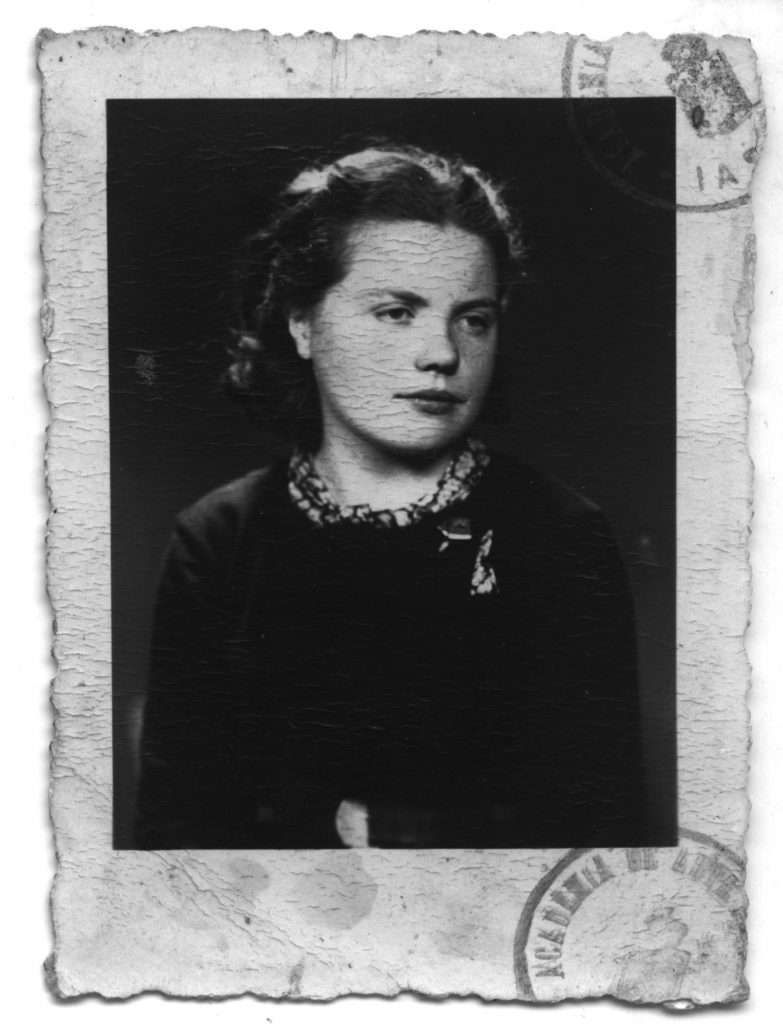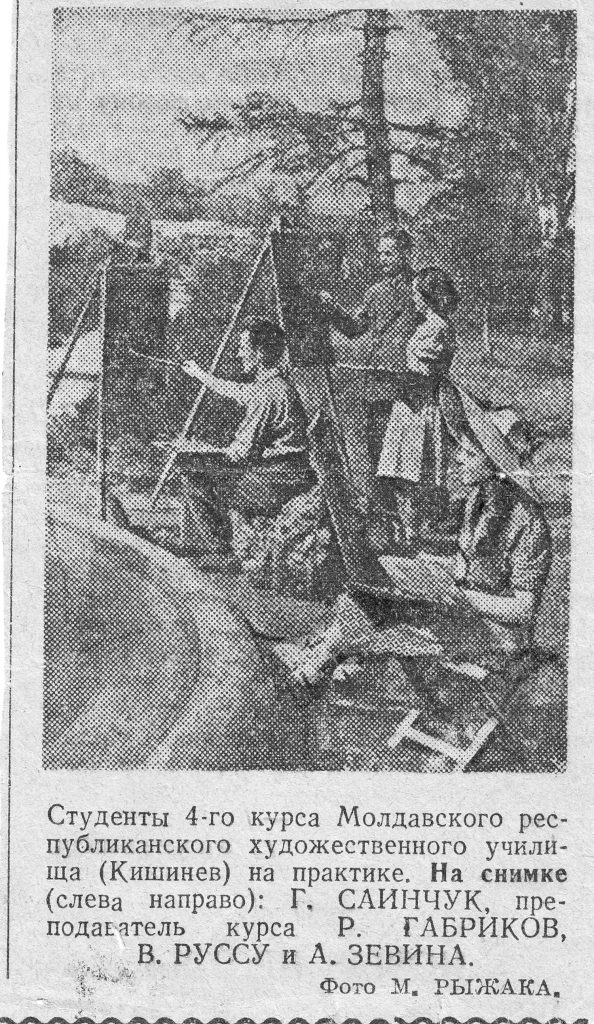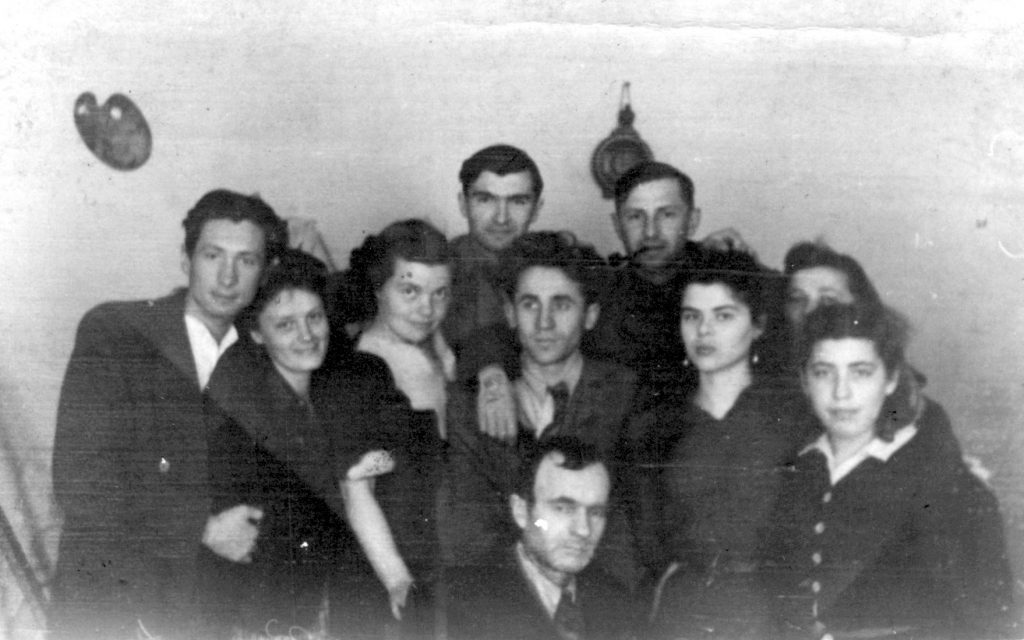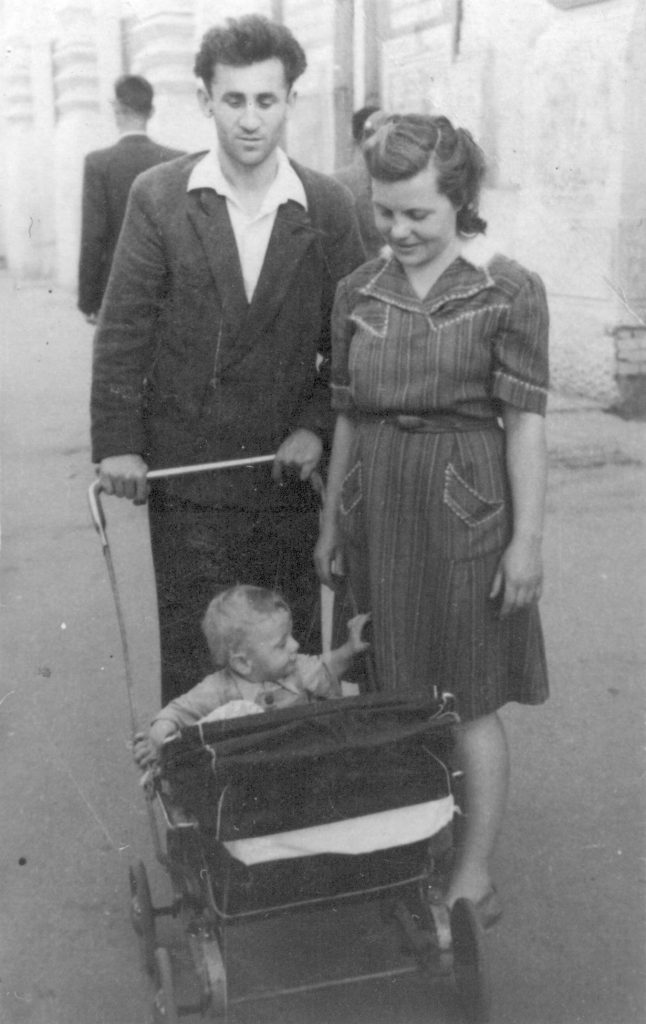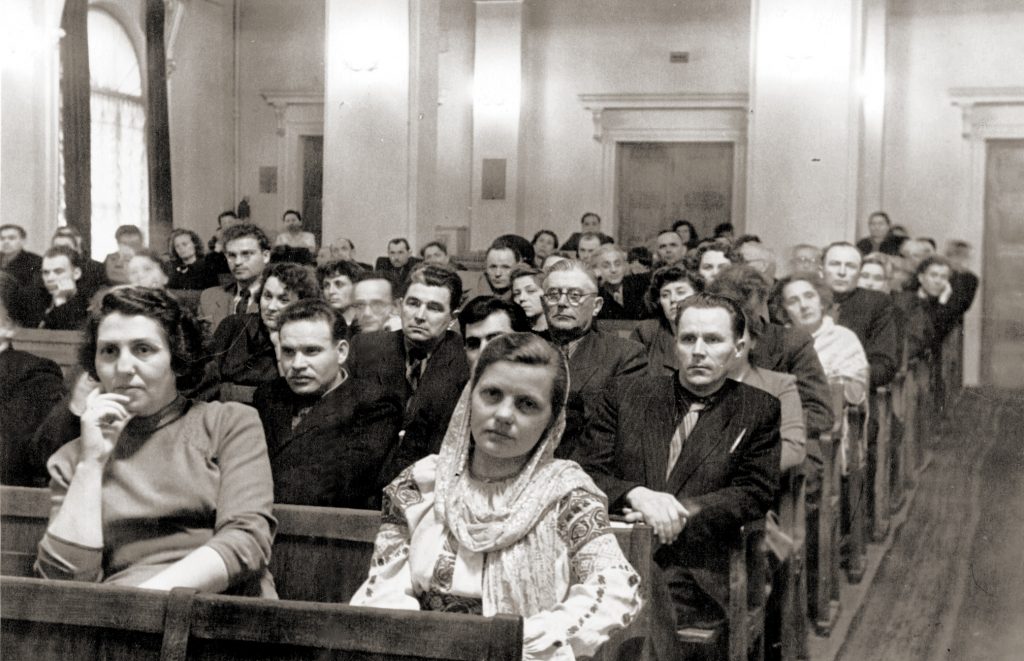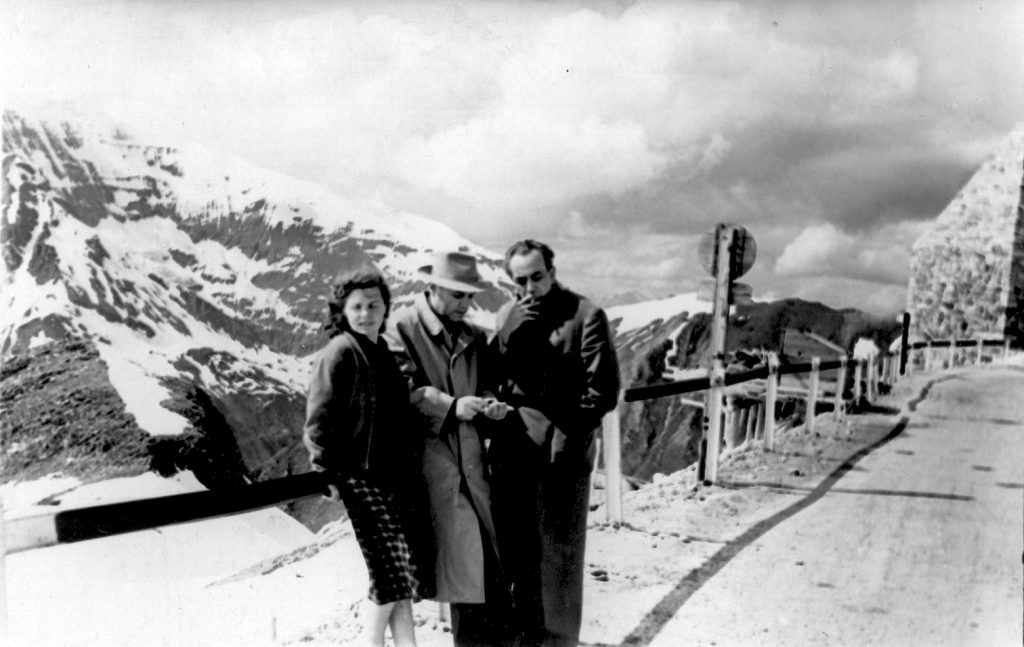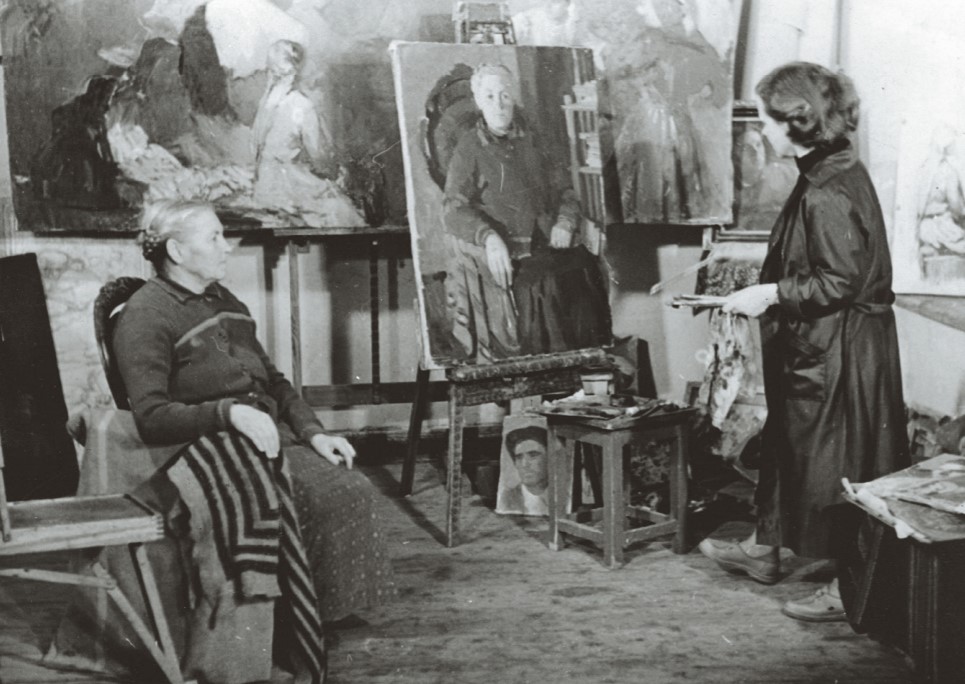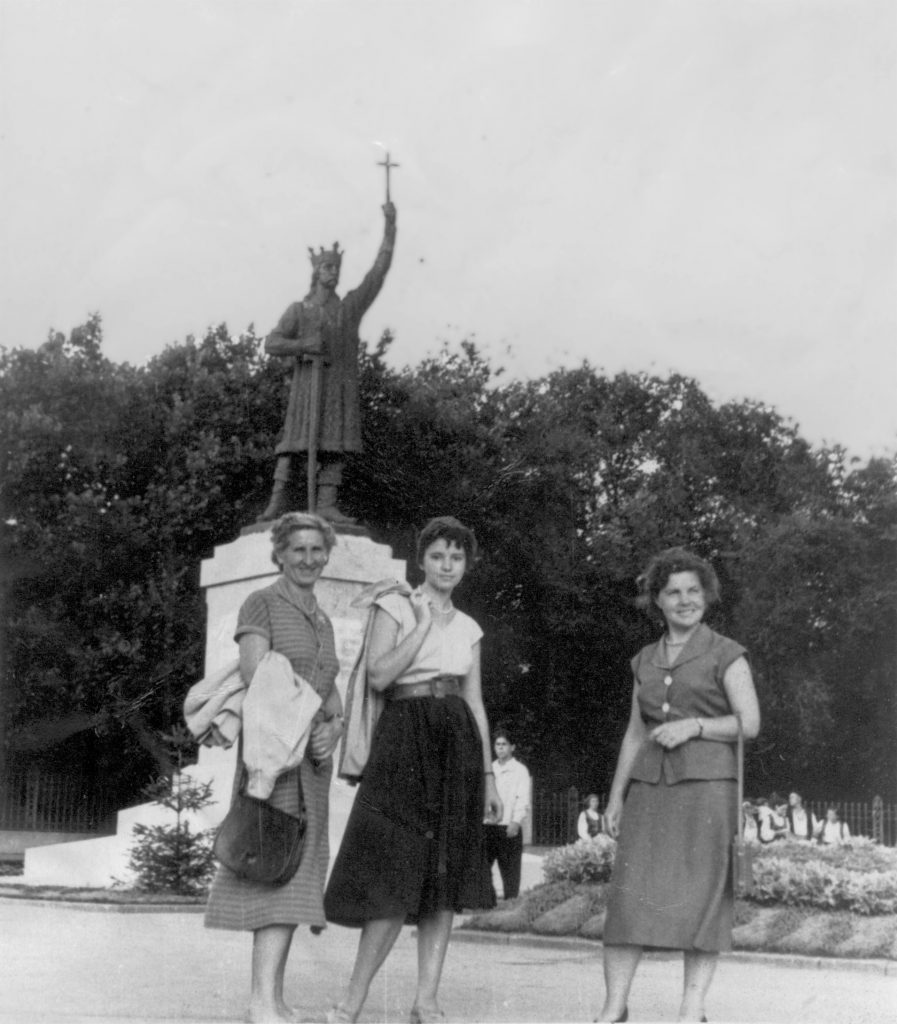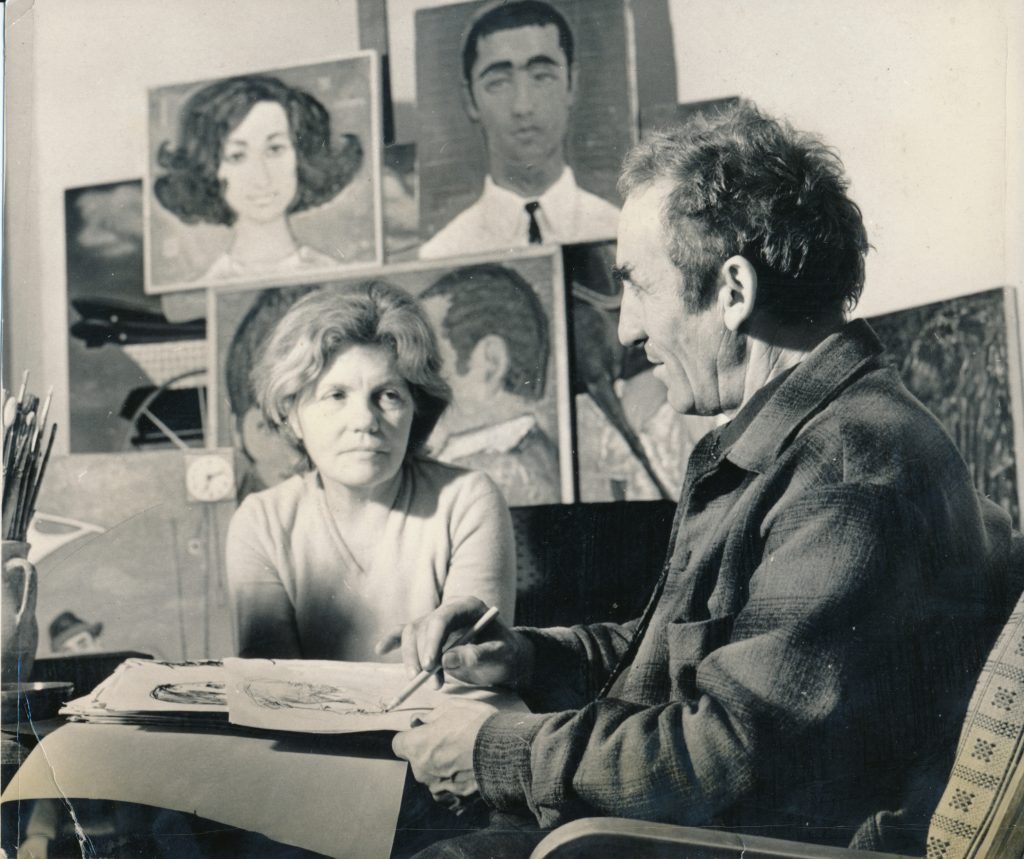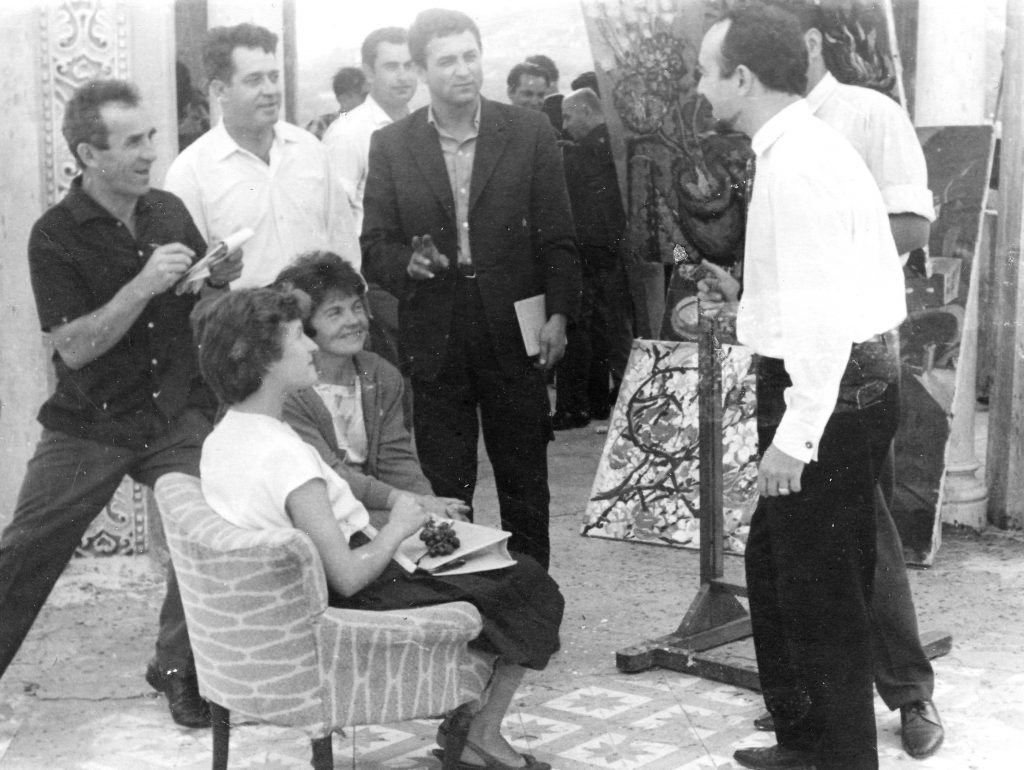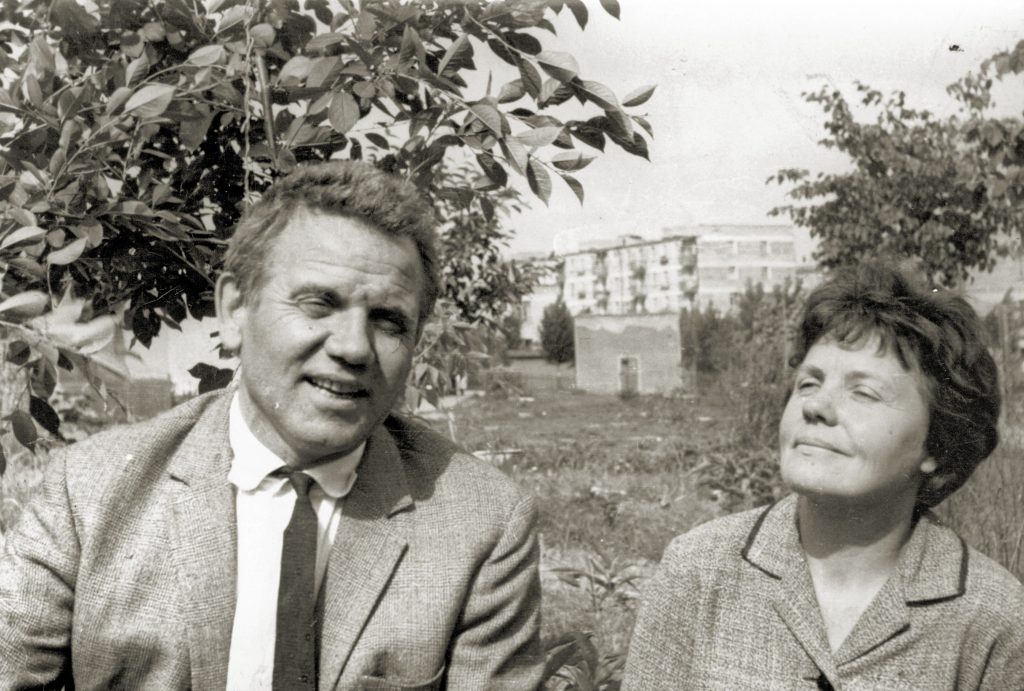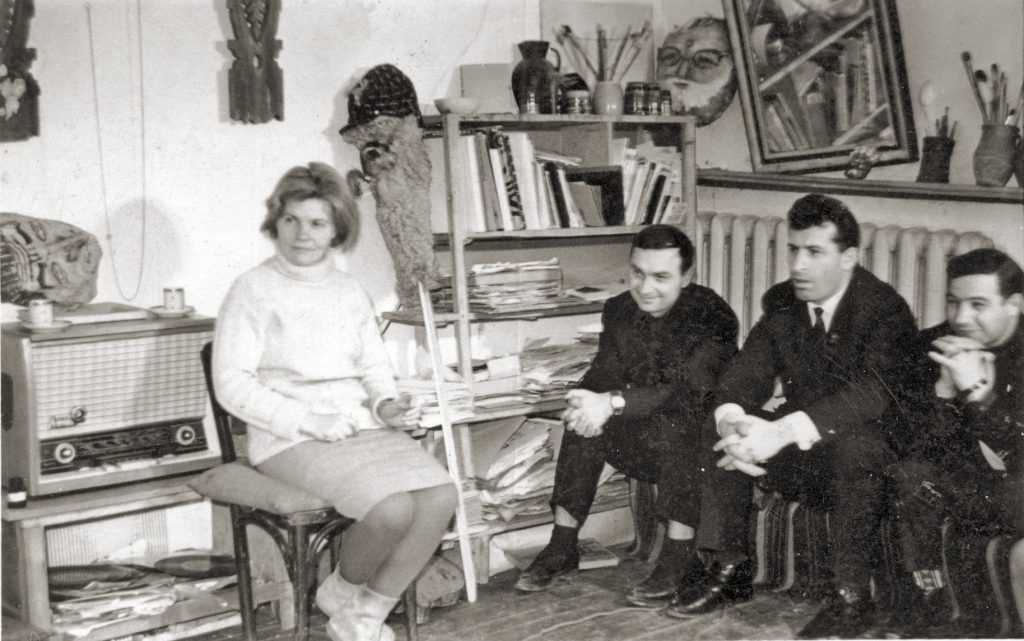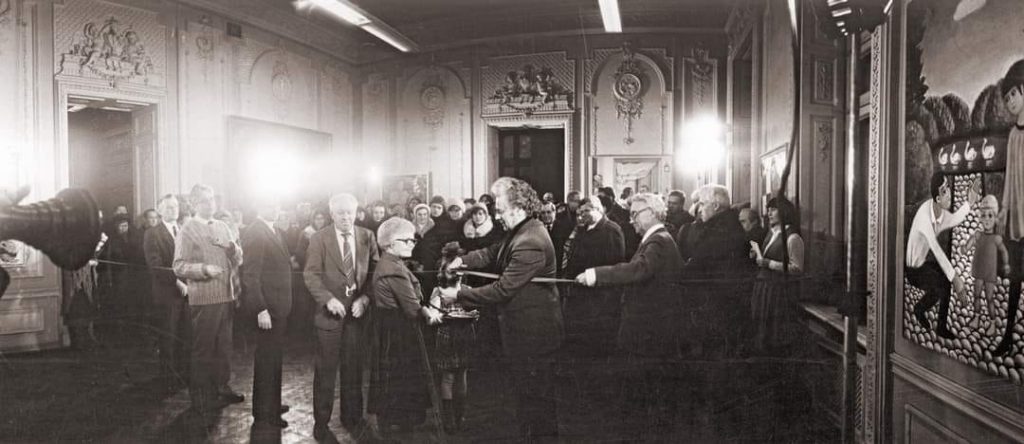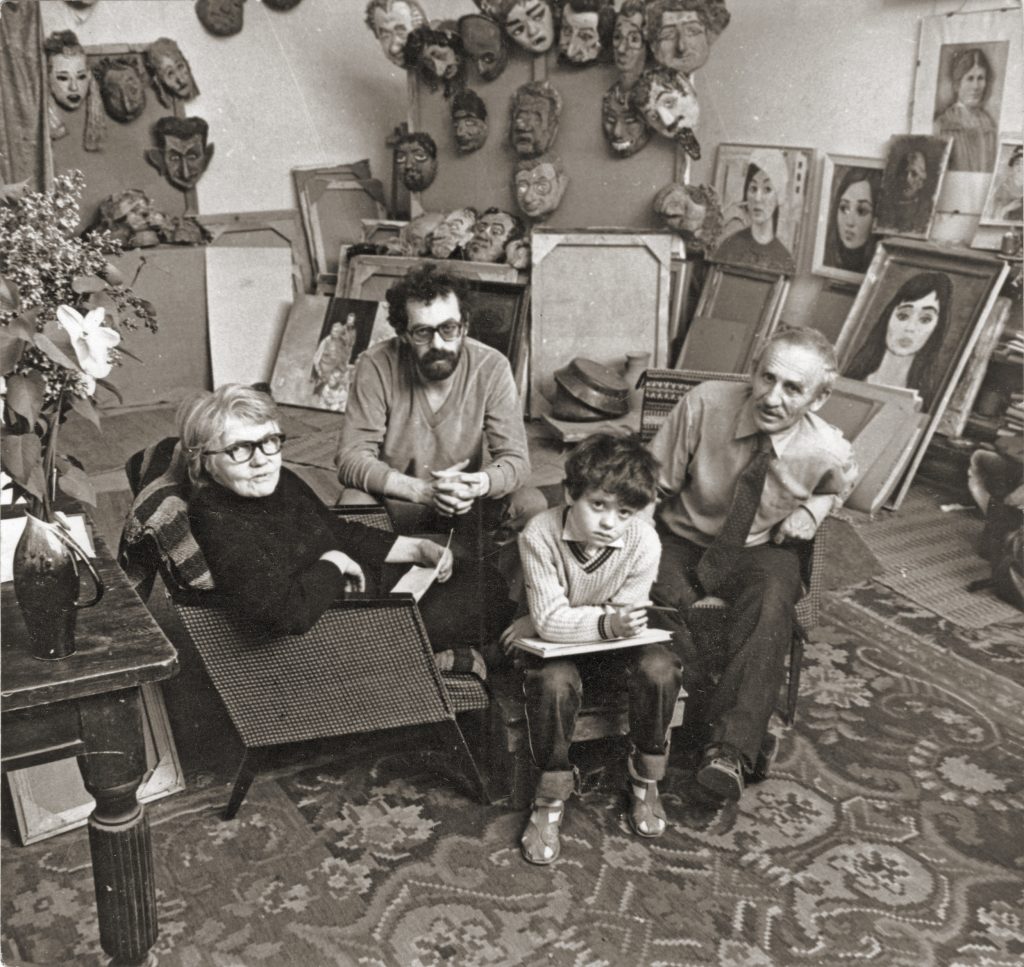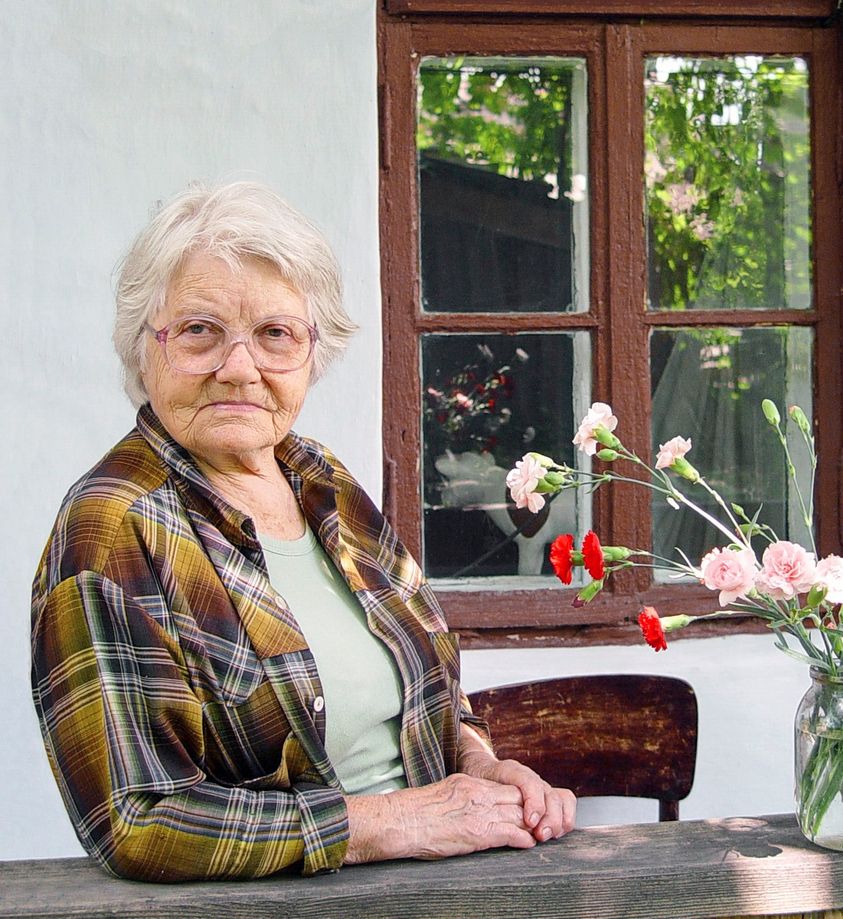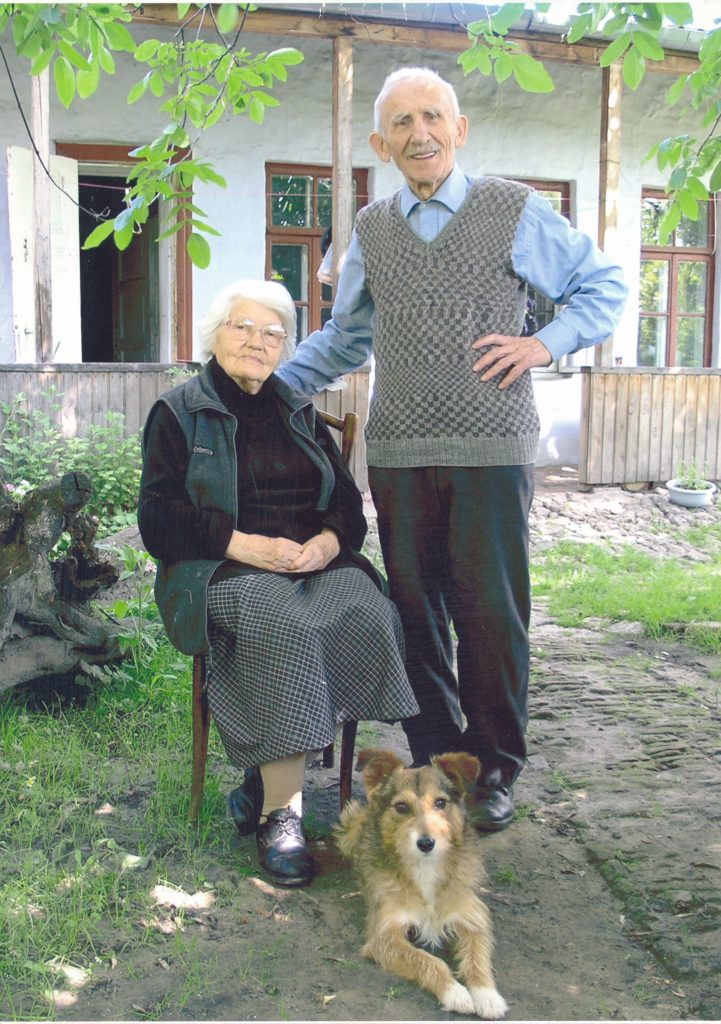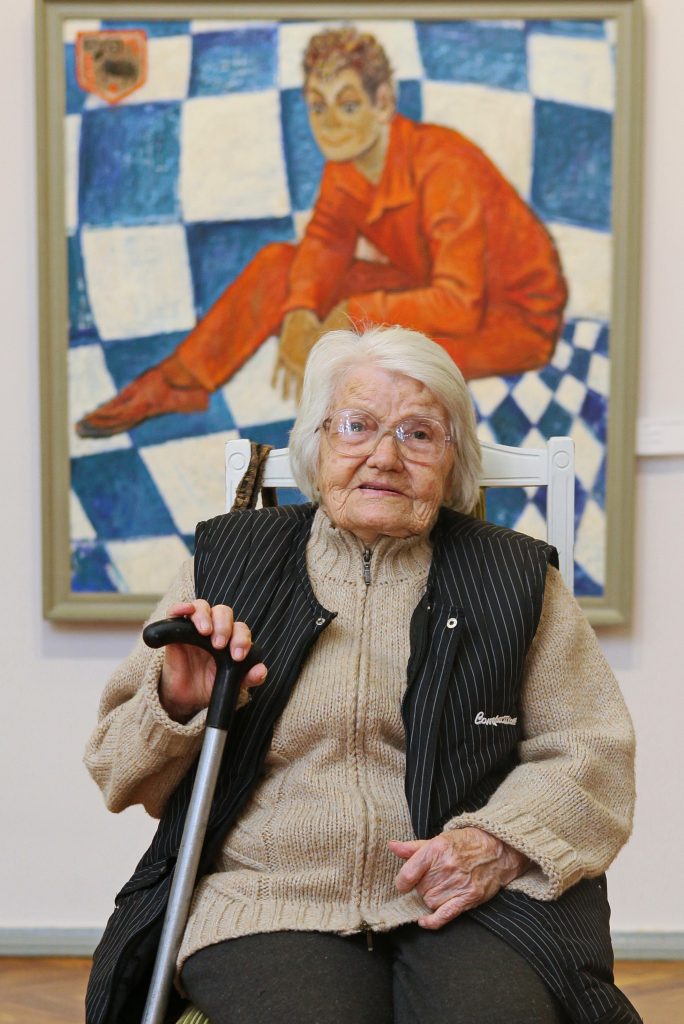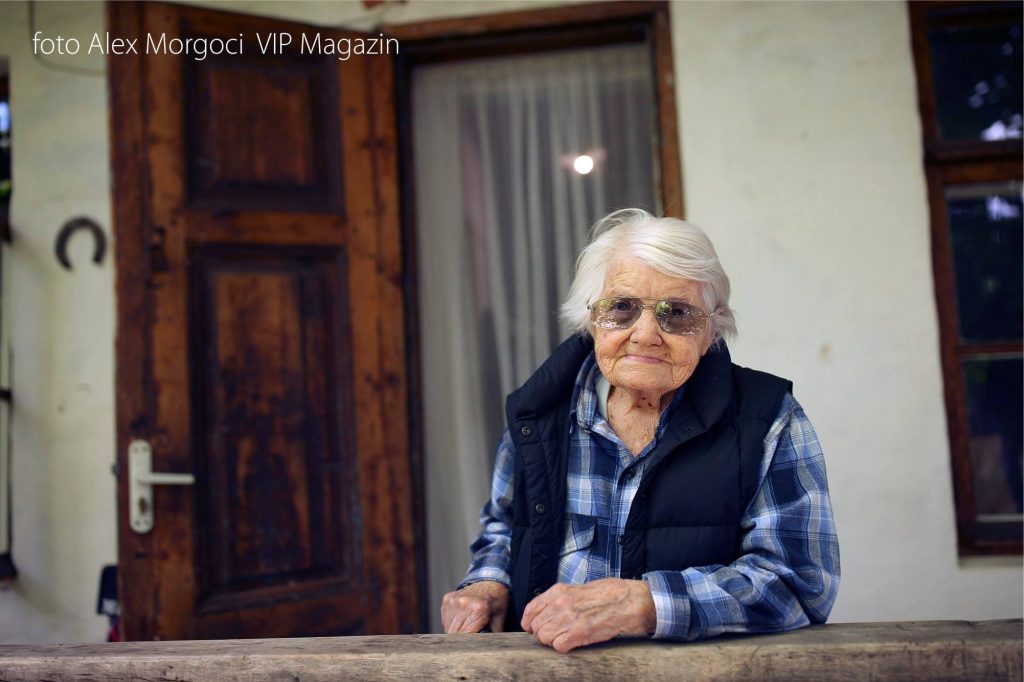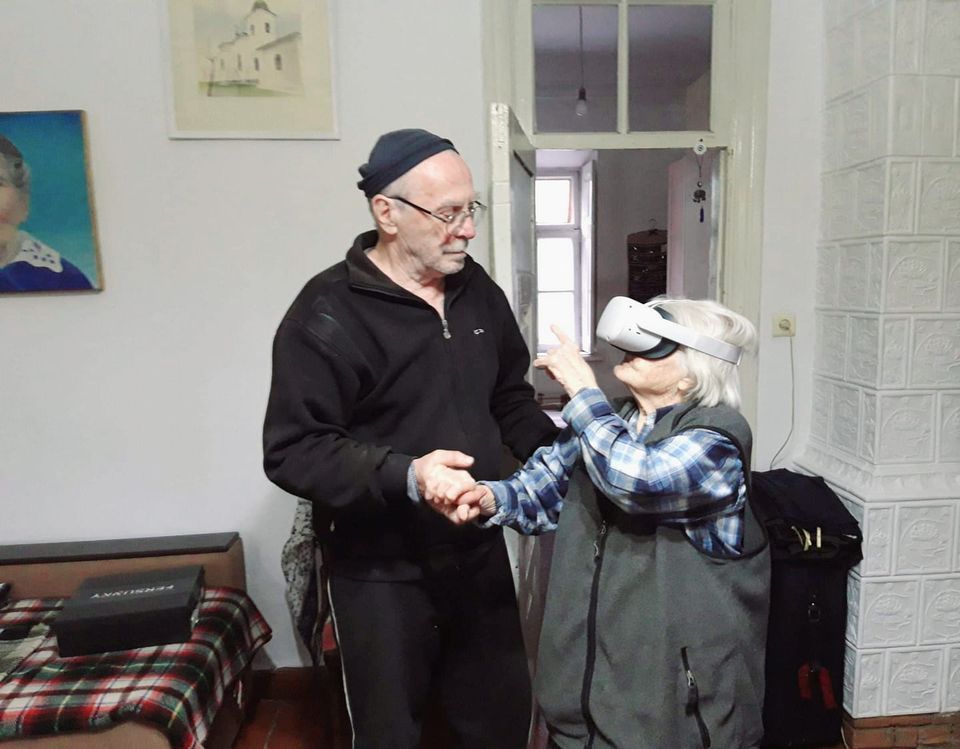Valentina Rusu Ciobanu
Biografie
Valentina Rusu Ciobanu (1920-2021) a aparținut generației de artiști plastici basarabeni care s-au format în ambianța culturală a României interbelice (fiind la Iași, în anii de război, eleva profesorului Jean Leon Cosmovici și a asistentului său, viitorul celebru pictor român Corneliu Baba), dar și-au desfășurat activitatea de creație în a doua jumătate a secolului al XX-lea în condițiile destul de vitrege impuse de regimul totalitar din fosta Uniune Sovietică.
„Fată la fereastră” a fost opera de debut din anii 1950 grație căreia pictorița de la Chișinău a depășit bariera anonimatului. Tablourile care i-au urmat – „La joc” și „Ștefan cel Mare după lupta de la Războieni”, realizate într-o manieră realistă -, au consacrat-o pe Valentina Rusu Ciobanu în calitate de iscusită componistă și coloristă. Schimbările produse la sfârșitul anilor 1950 – începutul anilor 1960 în arta plastică din fostul spațiu sovietic („dezghețul” hrușciovist, apariția așa-numitului „stil sever”, aplecarea către monumentalitate și decorativism din pictura de șevalet, ș.a.) s-au oglindit și în creațiile artistei plastice de la Chișinău, „Plantarea pomilor” fiind în acest sens o operă de cotitură. Refuzul ministerului culturii din republică (în urma presiunilor exercitate pe linie de partid!) de a achiziționa „Triplul portret al compozitorilor Alexei Stârcea, Vasile Zagorschi și al cântăreței Valentina Savițcaia” nu a reușit s-o intimideze pe pictoriță. Mai mult decât atât, în ciuda acestui refuz și a obligației impuse de minister de a picta alte trei portrete în schimbul avansului deja plătit, a devenit posibilă apariția portretului „Actorul Dumitru Fusu” din anul 1963 – una dintre cele mai reușite mostre ale acestui gen de artă din pictura moldovenească a deceniului respectiv.
Urmându-și propria cale în creație, Valentina Rusu Ciobanu îmbrățișează în anii 1960 și la începutul anilor 1970 maniera sinceră a artei naive, manieră în care șarja, grotescul, umorul bonom veneau oarecum în replică la clișeele promovate de regim. Portretele „Regizorul Emil Loteanu” și „Ion Druță” sunt operele de referință din această perioadă. Întrebată odată în cadrul unui interviu: „Ce este mai important în arta portretului?”, Valentina Rusu Ciobanu a răspuns: „Important este să găsesc formula omului! ”. O astfel de formulă, atât la propriu, cât și la figurat, a descoperit pictorița în „Portretul lui Ion Sandri Șcurea”.
Anii 1970 au fost deceniul cel mai prolific în activitatea de creație a Valentinei Rusu Ciobanu. Este perioada în care artista s-a manifestat plenar nu numai în portret, natură moartă sau pictură de gen, ci și în scenografie. Lumea teatrului, în special lumea spectacolelor realizate de prima generație de actori ai teatrului „Luceafărul” din Chișinău, a atras-o permanent pe plasticiană.
În deceniul următor pictori ța a experimentat reușit în cheie fotorealistă, a folosit posibilitățile intertextualității (tabloul „Citate din istoria artei”) și ale introspecțiilor în „sfera oniricului”, creând tablouri cu profunde semnificații metaforice.
În ciuda presiunilor de ordin ideologic cu care s-a confruntat în cea mai mare parte a vieții, Valentina Rusu Ciobanu a reușit să-și păstreze individualitatea discursului plastic, învrednicindu-se apoi și de înalte distincții de stat precum titlul onorific de „Artist plastic al poporului”, „Ordinul Republicii”, titlul de Cetățean de onoare al municipiului Chișinău și, în 2020, Ordinul „Meritul Cultural”, în grad de Mare Ofițer, conferit printr-un decret semnat de Klaus Werner Iohannis, Președintele României.
Constantin I. Ciobanu, istoric de artă
Valentina Rusu Ciobanu (1920-2021) belonged to the generation of visual Moldovan artists that emerged in Romania’s cultural milieu between the two world wars, as during the war she studied in Iași under Jean Leon Cosmovici and his assistant, the future celebrated Romanian painter Corneliu Baba; however, this generation of artists worked in the second half of the 20th century, which was dominated by the quite harsh environment of the former Soviet Union’s totalitarian regime. Girl by the Window (1950s) was Valentina Rusu Ciobanu’s debut painting, which also broke the painter’s anonymity. Two pieces were to follow – Village Dance and Ștefan cel Mare after the Războieni Battle – executed in a realistic style, which established Valentina Rusu Ciobanu as a master of composition and color. The changes which occurred in the late ’50s-early ’60s in the art world of the former Soviet Union (Khrushchev’s ‘thaw’, the emergence of the so-called ‘severe style’, deference to monumentality and decorationism in easel painting, etc.) were also reflected in the work of Valentina Rusu Ciobanu, her painting Tree Planting marking a turning point in this respect. She did not feel intimidated when the Republic’s Ministry of Culture refused (under pressure from the Party) to buy the triple portrait of composers Alexei Stârcea and Vasile Zagorschi and of singer Valentina Savițcaia. In fact, this refusal and the adamant requirement by the Ministry to execute three other portraits against the advance already received by the artist caused the appearance in 1964 of the portrait of actor Dumitru Fusu – one of the finest examples of the genre in the Moldovan painting of the decade.
Valentina Rusu Ciobanu chose her own path in painting and, in the ’60s and early ’70s, she assumed frankly the manner of naive art, where caricature, the grotesque and bonhomie humor represented a sort of response to the clichés promoted by the regime. The portraits of film director Emil Loteanu and writer Ion Druță stand as landmarks of this period. When an interviewer once asked Valentina Rusu Ciobanu, ‘What is the most important aspect in the art of portraiture?’, she answered, ‘The important thing is to find the person’s formula!’ It is such formula – both figurative and literal – that the artist revealed in the Portrait of Ion Sandri Șcurea.
The ’70s were the most prolific period in Valentina Rusu Ciobanu’s work. It was during this period that she was at her best in portraiture, still life and genre painting, as well as in stage design. The artists had always been drawn to the world of theater, especially to that created by the first generation of actors at the Luceafărul Theater in Chișinău.
Later on, in the ’70s and ’80s, Valentina Rusu Ciobanu experimented successfully with photorealism, used the potential offered by intertextuality (Quotes from the History of Art) and probed the ‘realm of dreams’, producing paintings of profound metaphorical meaning.
In spite of the ideological pressure she felt throughout most of her career, Valentina Rusu Ciobanu managed to preserve the individuality of her artistic discourse and was even subsequently awarded notable governmental distinctions, such as the Republic of Moldova National Award for Literature, Art and Architecture; the honorary title People’s Visual Artist; the Medal of the Republic. She also became an Honorary Citizen of the City of Chișinău and was awarded, in 2020, by a decree of the Romanian President Klaus Werner Iohannis, the Order of Cultural Merit in the rank of Grand Officer.
Iulian Robu, English translation
Валентина Русу Чобану родилась 28 октября 1920 года. Она принадлежала к поколению бессарабских живописцев, сформировавшихся в культурной среде межвоенной Румынии. Валентина училась в Академии художеств в Яссах, по классу профессора Жана Леона Космовича и его ассистента – будущего корифея румынской живописи – Корнелиу Баба, но вся ее творческая жизнь проходила во второй половине ХХ века, в довольно суровых условиях тоталитарного режима бывшего Советского Союза.
«Девушка у окна» – дебютная работа Валентины Русу Чобану, датируемая 1954 годом. Затем последовали картины «Ла Жок (рус. Приглашение к танцу)» и «Штефан чел Маре после битвы при Разбоенах», выполненные в реалистической манере, в которых Валентина Русу Чобану проявила себя как искусный компоновщик и колорист. Произошедшие на стыке 1950-1960-х гг. перемены в советском искусстве (хрущевская «оттепель», появление так называемого «сурового стиля», склонность к монументальности и декоративности в станковой живописи и др.) не могли не отразиться на творчестве кишиневской художницы. И в этом отношении знаковым полотном является ее картина «Посадка деревьев».
Отказ Министерства культуры МССР в 1963 году приобрести «Тройной портрет композиторов Алексея Стырча, Василия Загорского и певицы Валентины Савицкой», вследствие давления партийных чиновников, не остановил творческих изысканий Валентины Русу Чобану. В этот период она создаёт одну из лучших своих работ того десятилетия- «Портрет актёра Думитру Фусу».
Следуя своему предназначению, Валентина Русу Чобану в 60-х и начале 70-х гг. много работает в любимом ею жанре наивного искусства, в художественной манере где много гротеска, проницательности, юмора и искренности. Этот художественный язык был своего рода «отпором» на общепринятые клише, пропагандируемым коммунистическим режимом. Очень показательными произведениями того времени можно считать портреты режиссера Эмиля Лотяну и писателя Иона Друцэ. Однажды на вопрос журналиста : «Что важнее всего в портретном искусстве?», Валентина Русу Чобану ответила: «Важно найти формулу человека! “. Такая формула в прямом и переносном смысле была открыта художницей в «Портрете Иона Сандри Шкуря». 70-е годы стали самым плодотворным десятилетием в творчестве Валентины Русу Чобану. В течение тех лет она в полной мере проявила себя не только в портрете, натюрморте и жанровой живописи, но и в сценографии. Мир театра, особенно мир спектаклей первого поколения актеров театра «Лучафэрул» в Кишиневе, неизменно привлекал ее, как Мастера холста и кисти.
Позже, в 80-е годы, Валентина Русу Чобану много и успешно экспериментировала в стиле фотореализма, использовала возможности интертекстуальности (картина «Цитаты из истории искусства») и погружения в «сферу сновидений», создавая таким образом работы с глубоким метафорическим смыслом.
Несмотря на идеологическое давление, с которым она сталкивалась большую часть своей жизни, Валентина Русу Чобану сумела сохранить свою творческую индивидуальность.
За свою почти 80-летнюю карьеру Валентина Русу Чобану получила огромную любовь публики и высокие государственные награды. Она обладатель Государственной премии Республики Молдова в области литературы, искусства и архитектуры, «Ордена Республики», званий «Народного художника» и «Почетного гражданина Кишинева». В 2020 указом Президента Румынии Клауса Вернера Йоханниса, она была награждена высшим орденом «За заслуги перед культурой».
Перевод Наталии Шмургун

